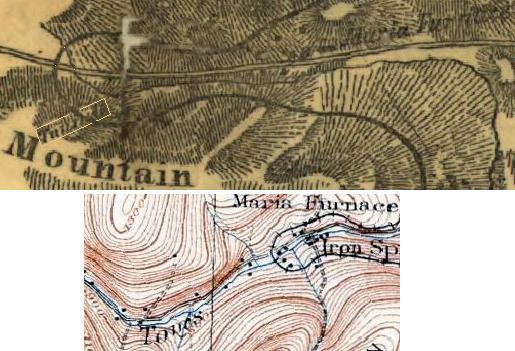 | ||
Tapeworm railroad part 1
The Tapeworm Railroad (Gettysburg Rail Road) was a railway line planned by Congressman Thaddeus Stevens and nicknamed by opponents ridiculing a lengthy serpentine section around the Green Ridge of South Mountain after an orator compared the path to a tapeworm depiction on a product's packaging. Switchbacks were planned on the west slope at Hughs Forge along the E Br Antietam Creek ("Cold Spring Cr" in 1839) and on the east slope at Stevens' 1822 Maria Furnace along Toms Creek (Monocacy River), with 3 east slope tunnels through spurs of Jacks Mountain.
Contents
In 1836, Herman Haupt had surveyed the "road from Gettysburg across South Mountain to the Potomac" and in 1838, the rail "bed" was "graded for a number of miles, never got further than Monterey", and included the following (west-to-east):
After Thaddeus Stevens lost his position on the Canal Commission, the commonwealth ended the railroad's financing and work was suspended in 1838, and an 1839 survey was ordered of the planned line. As late as 1885, "Tapeworm" was used for the Hanover Junction, Hanover and Gettysburg Railroad line west of the preceding 1858 Gettysburg Railroad line.
